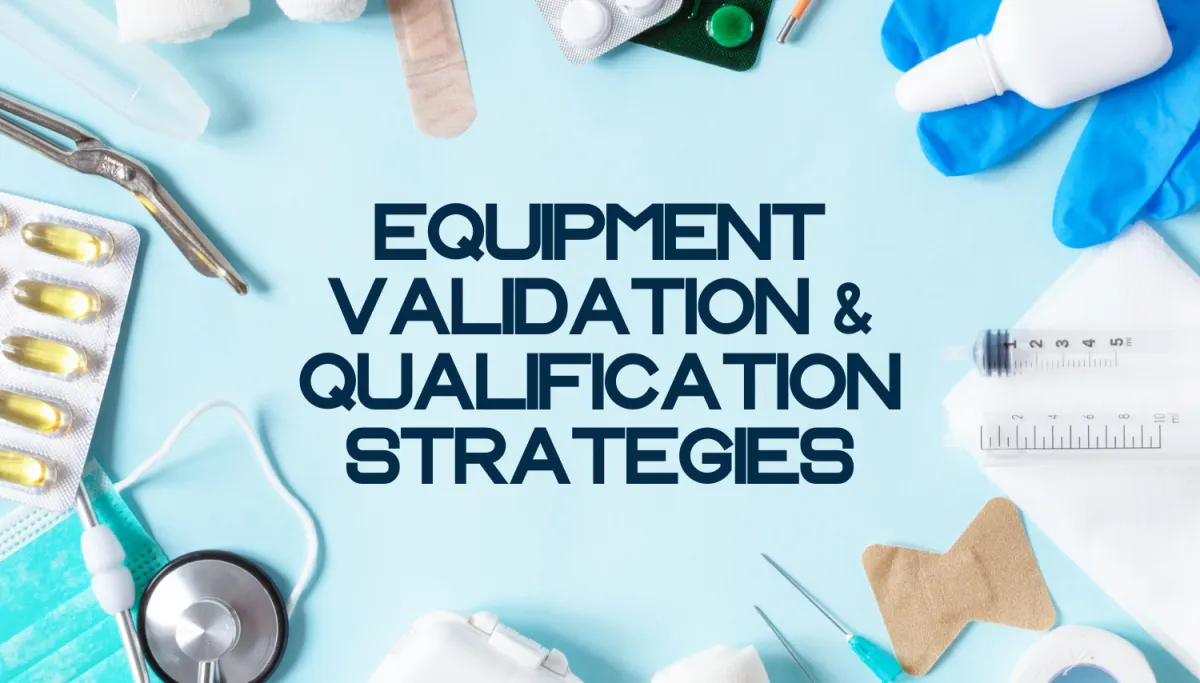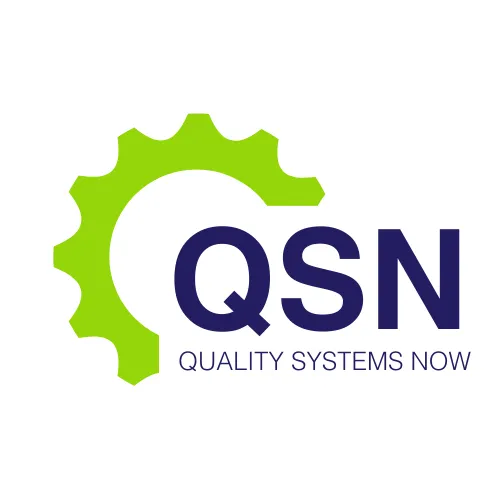LATEST NEWS

Equipment Validation and Qualification Strategies
Equipment validation and qualification, along with comprehensive protocols for development, maintenance, and calibration programs, form the backbone of a robust regulatory framework. This paper outlines the critical components of these processes, their significance in the pharmaceutical and biotechnology sectors, and their implementation for maintaining regulatory compliance.
If you want to learn more, please get in touch.
Equipment Validation and Qualification Strategy
Definition and Purpose
Equipment validation refers to the process of ensuring that instruments, systems, and equipment operate according to their intended purpose and comply with the required standards. Equipment qualification, on the other hand, is the systematic process of verifying that the equipment has been installed correctly, operates within specified limits, and can produce reliable and reproducible results. Together, validation and qualification are integral to maintaining compliance with industry standards and ensuring the safety, efficacy, and quality of products.
In therapeutic goods manufacturing, testing laboratories, and biotechnology companies, the importance of these processes cannot be overstated. Regulatory agencies, such as the Therapeutic Goods Administration (TGA) in Australia, mandate stringent guidelines for equipment to ensure that it consistently meets performance criteria throughout its lifecycle.
Strategies for Effective Equipment Validation
A well-designed equipment validation strategy should address several key components:
Risk Assessment: Identifying potential risks associated with the equipment’s use and its impact on the final product quality is crucial. A thorough risk analysis helps in determining the validation scope, frequency of checks, and the required testing methods.
Protocol Development: The creation of detailed validation protocols is essential for guiding the validation process. These protocols outline the testing requirements, success criteria, and detailed procedures for installation, operational, and performance qualifications (IQ, OQ, and PQ). These protocols ensure that the validation process is comprehensive, structured, and transparent.
Documentation: Thorough documentation is vital for proving compliance. Every step in the equipment validation process, including planning, execution, and outcomes, must be documented in accordance with regulatory requirements. This documentation provides a clear audit trail, ensuring accountability and transparency.
Continual Monitoring: After validation, continuous monitoring of the equipment is necessary to ensure that it operates correctly over time. This includes performance checks and calibration at regular intervals to maintain compliance and operational accuracy.
Protocol Development
Defining Protocols for Qualification and Validation
Protocol development is a key aspect of ensuring that all equipment and systems used in therapeutic goods manufacturing and testing are qualified and validated according to regulatory standards. These protocols guide the validation process, ensuring that it is executed in a consistent, reproducible, and auditable manner.
A well-developed protocol should include:
Test Plan and Objectives: Clear and concise objectives must be defined to outline the goals of the validation or qualification process. The test plan should specify what parameters will be measured, how they will be measured, and what criteria must be met for successful validation.
Acceptance Criteria: The protocol must set out the acceptable limits for each parameter being tested. These criteria are based on industry standards, manufacturer specifications, and regulatory guidelines, ensuring that the equipment performs within the required tolerance levels.
Testing Procedures: Detailed instructions for performing tests must be provided to ensure consistency and repeatability. The testing procedures must cover all phases of the equipment’s operation, from installation to performance, and include contingency plans for any issues that arise during testing.
Risk Management Considerations: A comprehensive risk management approach must be integrated into the protocol. This should include the identification and assessment of potential risks associated with the equipment’s failure, and strategies to mitigate those risks.
Acceptance and Rejection Criteria: Based on the results of the testing, the protocol should establish clear criteria for determining whether the equipment passes or fails validation. These criteria help to assess whether the equipment consistently meets the required performance standards.
Regulatory Requirements and Compliance
For industries such as biotechnology and pharmaceutical manufacturing, adhering to regulatory guidelines such as Good Manufacturing Practice (GMP), ISO 13485, and local regulations (e.g., TGA or FDA) is essential. Protocols must be designed to comply with these standards, which dictate the types of documentation, testing, and reporting necessary to ensure that the equipment is fit for its intended use.
Maintenance & Calibration Programs
Importance of Regular Maintenance
Equipment used in manufacturing and testing must undergo regular maintenance to ensure continued performance. Preventive maintenance programs are critical to prevent equipment breakdowns and unplanned downtime, which could compromise product quality or delay production schedules. These programs are designed to systematically check and maintain equipment at regular intervals, identifying potential issues before they become critical.
Scheduled Inspections: These are conducted at predetermined intervals, based on the manufacturer’s recommendations or regulatory requirements. Inspections ensure that all components are functioning properly and within acceptable limits.
Corrective Actions: In case of deviations, corrective maintenance is performed to rectify issues that could potentially impact equipment performance. This involves repairing or replacing faulty parts and updating equipment calibration as needed.
Calibration Programs
Calibration ensures that the equipment produces accurate and reliable results, which is essential for compliance with regulatory standards. A robust calibration program involves verifying that the equipment is operating within the specified limits and measuring the relevant parameters with the required accuracy.
Frequency of Calibration: Calibration should be performed according to the manufacturer's guidelines or industry standards. In some cases, it may be required to perform calibration more frequently, depending on the criticality of the equipment and the parameters it measures.
Traceability: Calibration activities must be traceable, ensuring that the calibration equipment and procedures are documented and verifiable. This documentation supports regulatory compliance audits and ensures that all calibration actions are accurate and properly conducted.
Post-Calibration Verification: After calibration, equipment performance should be verified to confirm that it is still functioning within the specified tolerance limits.
Conclusion
In conclusion, an effective equipment validation and qualification strategy, combined with comprehensive protocol development and regular maintenance and calibration programs, is essential for ensuring compliance with regulatory standards in the therapeutic goods, testing, and biotechnology industries. The continuous monitoring and validation of equipment ensure that it consistently meets performance requirements, while proper maintenance and calibration programs help prevent issues that could impact the quality of products and results. By implementing these strategies, companies can remain audit-ready, minimize risks, and maintain regulatory compliance, ensuring the safety, efficacy, and quality of their products.
